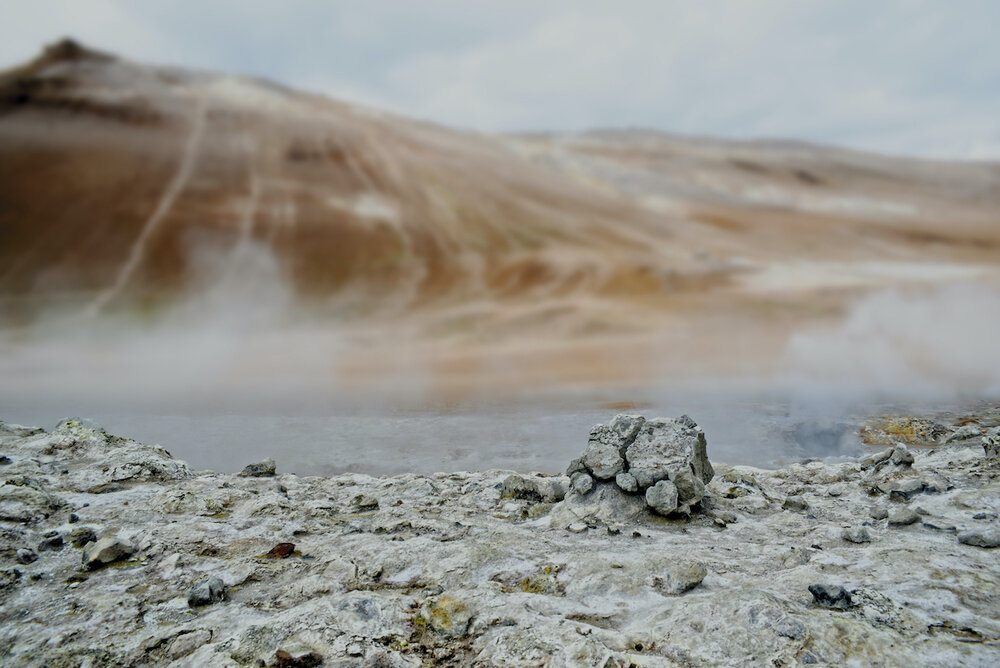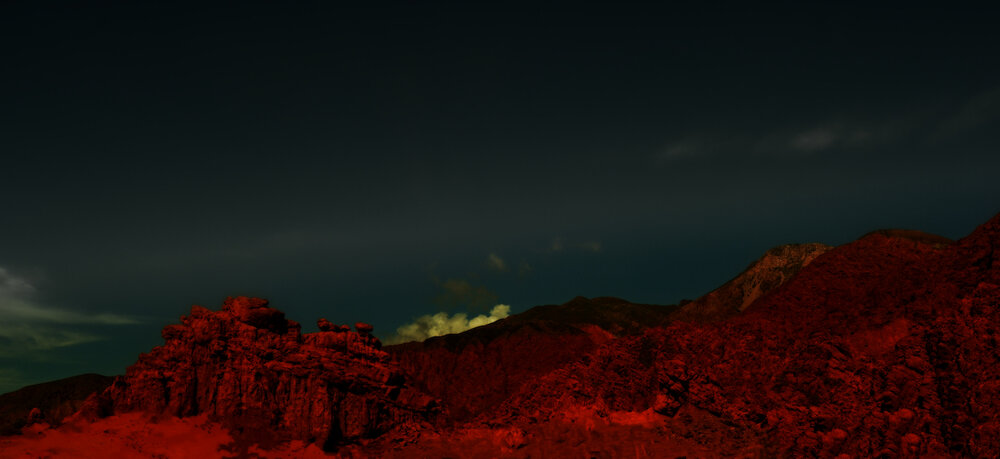Guadalupe Plaza Petersen is an Argentinean artist who lives and works in Italy. Her beautiful images make photography resonate with the very geological nature of our world, conveying the urgent issues we are concerned about in terms of the environment. In this exclusive interview, the artist shared with us valuable information about her creative process and thinking, in a practice that forces the limits of photographic representation: Photography and Anthropocene.

What do you mean by Anthropocene?
To accelerated and irreversible global warming The Anthropocene may coincide with the rise of the modern environmental movement, as a new geological age that has displaced the Holocene of the last 10,000 to 12,000 years. Human beings have become an emerging geological force that affects the future of the Earth.
The dramatic changes in the correspondence of humans and the environment. Beginning with the Industrial Revolution, the late 1940s and early 1950s, the strong impact of Contemporary Society, the rise of capitalism, the colonization of the world, and the era of fossil fuels. The geologist, Thomas Jenkyn spoke of anthropozoic rocks, the geologist Pavlov used it to refer to a new geological period in which humanity was the main cause of planetary geological change, later Paul Crutzen (Nobel Prize in Chemistry) gave popularity to the term Anthropocene.
Why do you think photography as a medium is interesting to represent
the Anthropocene?
In my particular case and in my photographs in general, especially in this series Return to Paradise, it works as a meeting point, to rethink and overcome this separation of humanity from the environment, to make us reflect on the climate urgency, to generate awareness environment and responsibility with the planet that contains us and that we inhabit.
And the question: where do we stand in this symbiotic world, close to this common future?
I feel that the more we explore the universe, the more we become dejected by the narrative element that we find in all its levels. Nature also presents us with narratives embedded one within another;
cosmological history, history of life and of man until reaching our individual history.

Do you think that photography, as an artistic practice, can be used to spread environmental awareness? How can it be used?
In principle, I think it is to recognize what is the logic of our current mode of production, and from there try to rethink from a more sustainable place between humanity and the Earth.I think we can change course, climate change is one of the biggest challenges of our time. It is a great time to successfully face the transformations of the planet, which affect us all.
And of the possibility as a species of being able to do both changes in the environment we inhabit and at the same time we are also the only
one capable of reversing this process.
Do you make connections between the Anthropocene and
technology? How do you see technology in the field of photography, where technology is also central?
What is incredible and paradoxical about all this is that one of the many signs observed in the sediments are the materials scattered around the planet, such as plastics, a mobile phone made of plastic, glass and metals. These so-called technofossils, objects of human origin that we leave on the planet and that will last and will form part of the geological landscape now and in the future.
They constitute a physical record, an inscription, of our growing technological capacity and the characteristic that would differentiate them from other fossils.
And in the course of my work, from the camera to post production on the computer, I make exclusive use of technology.
Do you consider yourself a documentary photographer?
No, Not at all. I like to work first based on a concept or idea. It is a vital process for the creation of my photographs of my art and for its renewal.
What is the place of fiction, or fantasy, in your images?
Perhaps in this series I don’t work with those paradigms so much, but in my previous series, exploring elements of the unreal, daydreaming and fantastic, with a strong aesthetic sense.
The image is necessary to think about the real, the habitual and the imaginary that sustain our world, our desire and our pain. Reflecting on the connection between certain milestones such as adulthood, life, death and the way to order them, scrutinize them, generate a change, a mutation, a regeneration, sometimes comes unintentionally.
My creative process, I think, has more to do with exploration, and also with self-knowledge, fleeing from the place of comfort, to create from a certain abyss and emptiness. It is a personal exploration with a certain fragility and intentional ambiguity, which speaks of the feeling of abandonment, separation, limits, time and how the state of things is about to explode.

Do you think of the effect of your images in terms of the “sublime” as an aesthetic experience?
In this question I quote an artist who wrote a text for one of my love series. And that I think is what determines the most and the most genuine in my series: “Scaling beauty like a cursed summit.”
Are there theoretical notions that help you think about your images?
If there are theoretical and more concrete notions, they exist and I believe that the intersection between the trades and the arts is something necessary and daily for Contemporary Art.
Are you inspired by other photographers in their ability to represent
nature/landscape?
I was inspired by artists like Marina Abramovic, Louise Bourgeois, Cindy Sherman, Pipilotti Rist…

What message can photography convey in relation to the
Anthropocene?
Make us aware of the great brutal impact on the planet.
Do you interpret your approach as a political one?
Although my interest is not based on doing politics, I believe that the fact of working with such a contemporary issue, which requires urgency and is of general interest, in one way or another, or inadvertently, becomes political, it is like becoming in charge of what we generate, although my interest is more about raising, provoking in another some question, some feeling, that arrives in some way.
See more of the artist work here:
http://www.guadalupeplazapetersen.com
https://valkgallery.com/etiqueta-producto/guadalupe-plaza-petersen/